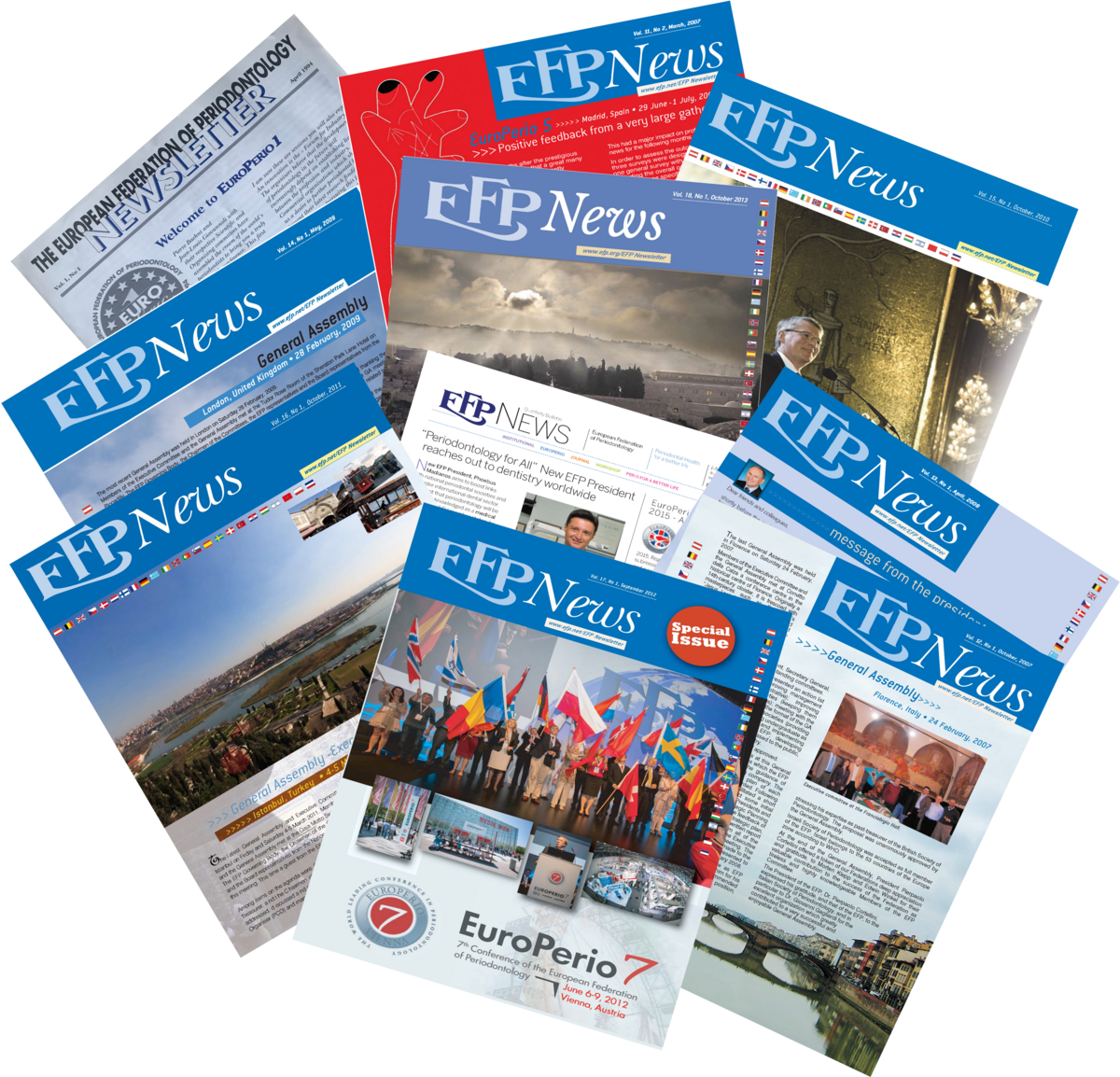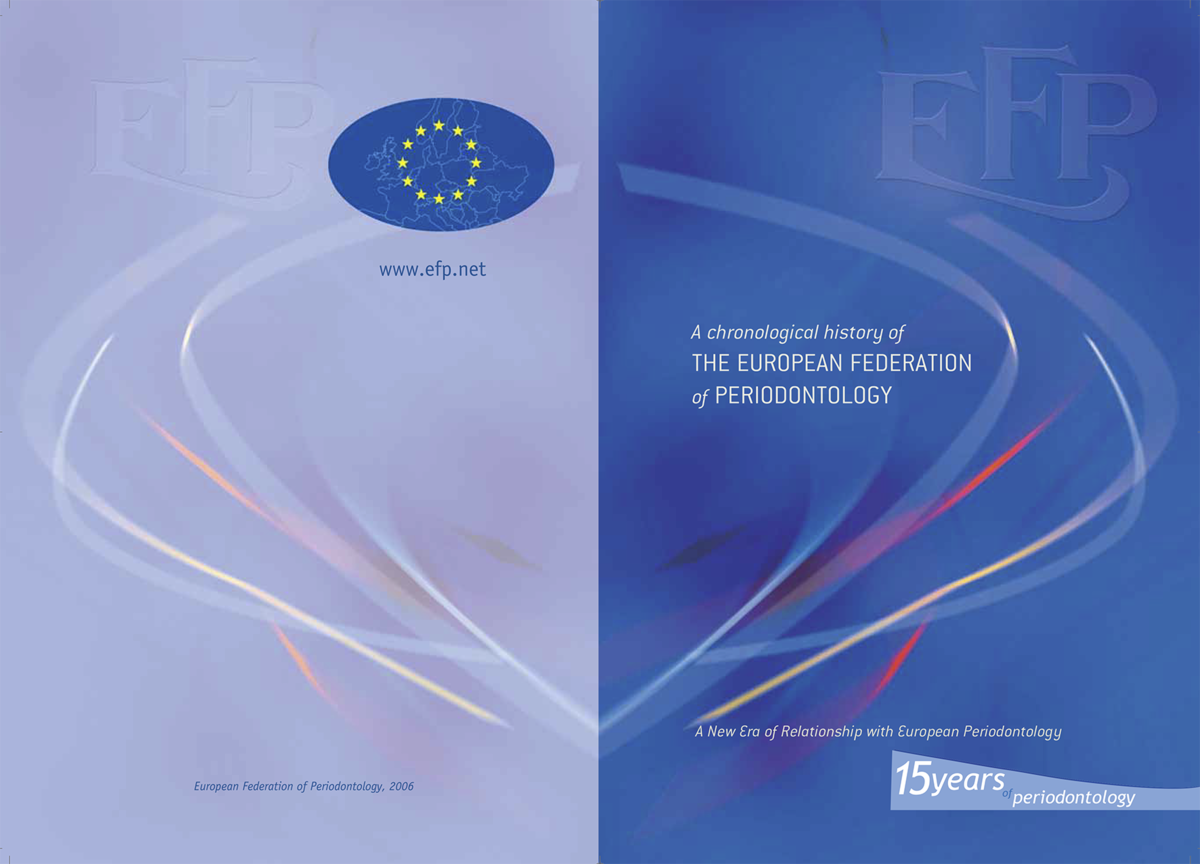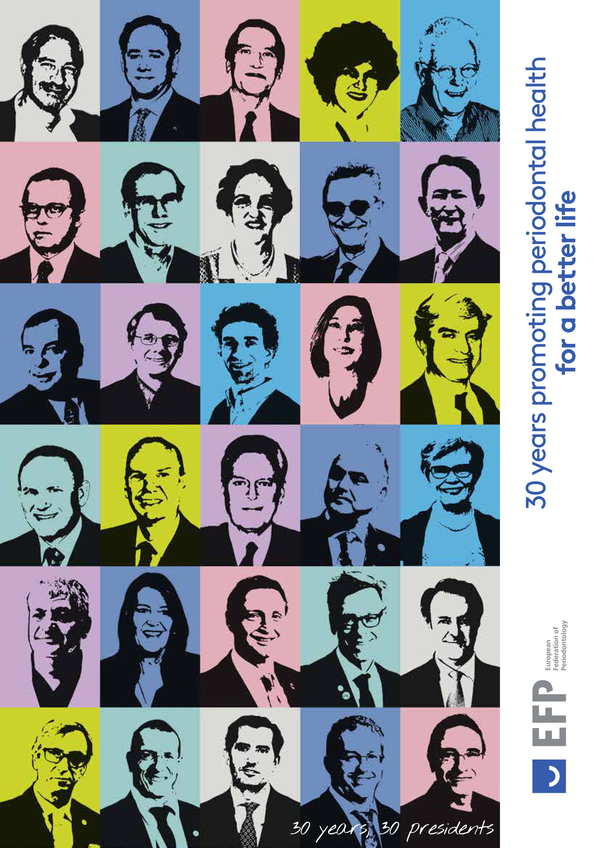Article
Looking back on how the EFP and its communications have evolved
05 June 2025
Joanna Kamma has been involved in the EFP’s publications and communications activities since the early years of the century. Having recently stood down as editor of the federation’s publications, she reflects on the evolution of the federation and the impact of its communications.

You have been involved with the EFP since 1996. How has the EFP evolved in this time? What have been the most important changes?
I think the four biggest changes have been in strategic planning, education, scientific excellence, and communications.
Strategic planning: When I became an elected officer in 2002, my first responsibility was to define the federation’s profile and engage with strategic-planning experts, which culminated in the EFP’s first strategic plan, implemented from 2008. The four strategic objectives outlined in this plan—under the headings Scientific Excellence, Education and Training, Policy and Advocacy, and Communication and Awareness—aimed to strengthen the federation’s role in advancing periodontal science and practice across Europe.
The creation of the strategic plan hugely helped the EFP to focus its activities and, over the years, successive plans have fine-tuned and expanded these original objectives, adapting to contemporary challenges and opportunities in periodontology.
Education has been a cornerstone of the EFP since the very beginning. From the earliest discussions that led to the federation’s formation in 1991, there was a clear emphasis on advancing periodontal education across Europe, with the creation of periodontal training programmes recognized by the EFP. The EFP has expanded its educational initiatives to encompass all levels of professional education: undergraduate training, postgraduate vocational education, and specialist training. These efforts have been instrumental in harmonizing periodontal education standards across Europe and beyond.
Scientific excellence was a foundational pillar of the EFP and remains one of its strategic objectives. While this principle underlines all the federation’s work, its most significant expression is the annual European Workshop on Periodontology, where the EFP brings together experts to critically evaluate emerging research, establish consensus on key issues, and develop evidence-based guidelines that shape clinical practice worldwide.
It has been wonderful to witness the evolution of the workshop, under its chairs Klaus Lang, Mariano Sanz, and David Herrera. Its key achievements have been the 2017 World Workshop classification of periodontal and peri-implant diseases and the three S3-level clinical practice guidelines for the treatment of periodontitis stages I–III (2019), periodontitis stage IV (2021), and peri-implant diseases (2022).
Communications: The EFP’s communications activities have played a pivotal role in advancing the federation’s strategic objectives, and I have enjoyed working as editor and member of the communications committee with three successive chairs.
Under the dynamic and visionary Edwin Winkel, a clear distinction between internal and external communications was established to ensure that messages were appropriately tailored to diverse audiences, enhancing clarity and engagement across the EFP member societies. It was during Edwin’s time as chair that the popular research summary JCP Digest was launched. Tiernan O’Brien then took over, and his engaging personality and trust in people served us well during a period of expansion and the professionalization of communications. Achievements included the launch of a new EFP website, new publications (Perio Insight, Perio Life, and Perio Review), the transformation of Gum Health Day into a global awareness event, and the development of the EFP’s presence in social media.
Over the last three years, Bettina Dannewitz brought a fresh and innovative approach to communications, with the development of digital products, such as the successful Perio Talks podcasts, a new and attractive format for the monthly newsletter, and the reorganization of print publications under the Publications Hub. Efforts were also made to ensure consistency of the EFP brand across all communications to strengthen the federation’s identity and mission.
One of the key initiatives within communications has been Gum Health Day, the annual awareness day held on May 12. Launched in 2014, it has evolved into a global event involving the federation’s national societies and other dental professionals, providing clear messages on gum health to the public.

Your main involvement at the EFP has been in publications and communications. How have these developed over the years?
I served as the first editor of EFP News starting in 2003. This biannual print publication was the sole official communication channel between the EFP and its affiliated national societies, which distributed the newsletter to their members. The newsletter was well received by member societies, serving as a vital link between the federation and its members.
In 2010, the EFP established the External Affairs Committee (later renamed the Communications Committee) to enhance communications both within the federation and with external stakeholders. This led to a more cohesive and professional communication strategy, including an improved website, monthly email newsletters, and active engagement on social-media platforms. These initiatives significantly improved the EFP’s ability to engage with its members and the public.
Another initiative I undertook was to document the history of the EFP. A Chronological History of the European Federation of Periodontology: A New Era of Relationship with European Periodontology was published in 2006 to commemorate the Federation’s fifteenth anniversary and sent to all members of the national societies. Known as the “blue booklet”, it became a valuable resource, frequently referred to during meetings of the executive committee. Fifteen years later, I co-ordinated the commemorative book 30 Years Promoting Periodontal Health for a Better Life, celebrating the EFP’s thirtieth anniversary, which chronicled its evolution, milestones, and contributions to periodontal science and public health.


During your time as editor, responsible for a growing body of EFP publications, the federation has increasingly relied on professional support in communications. How did this start and how has it evolved?
Since 2012, the EFP has used the services of various communications professionals – including writers, editors, graphic designers, photographers, and social-media experts – to better communicate its messages, both within the federation (to the ever-growing number of national societies) and to the press, policymakers, other stakeholders, and the public.
It was a good move, and I have been fortunate to collaborate with some exceptional professionals, whose editorial acumen and communications skills really helped me in improving the monthly newsletter and then in developing new publications.
The professionalization of EFP communications took an important step forward in 2020, with the appointment a head of communications who, among other things, has boosted our activity on social media and driven the important move into podcasting with the Perio Talks series. In terms of communications, we are now in very good shape.
What have been the main challenges in fulfilling your role as editor? And what have been the greatest achievements?
The three main challenges were getting news and updates from the national societies in a prompt and consistent way, the move to digital platforms and adapting the newsletter to online formats, and keeping the content publications relevant and engaging for a diverse audience across different countries and professional backgrounds.
In terms of achievements, I would highlight three things. First, the establishment and evolution of EFP News, which from its simple beginnings as a biannual print publication evolved into a monthly email newsletter reaching all members of EFP-affiliated societies. Second, the two commemorative publications marking the federation’s fifteenth and thirtieth anniversaries. And third, the development of the magazines Perio Insight (expert views on key topics in periodontology and implant dentistry) and Perio Life (the magazine for EFP Alumni), both of which were subsequently merged into the new Publications Hub, as well as the Perio Review annual report of the EFP's activities.
The launch of the EFP Publications Hub in November 2024 marked a significant advancement in the EFP’s efforts to streamline access to the content of a diverse range of publications, making it easier for professionals to stay informed about the latest developments in periodontal science and practice.
The Publications Hub has meant the end of the magazine-style Perio Insight, Perio Life, and the annual Perio Review report and their replacement with this single portal on the website. While this does enhance accessibility and the user experience, as the editor who was instrumental in developing those titles it is only natural to feel a sense of nostalgia for the individual identities these publications once held.
What advice would you give your successor as editor?
Based on my experience over the years, I would highlight four guiding principles:
- Preserve the federation's legacy by ensuring that all communications reflect our commitment to excellence and our foundational values.
- Maintain editorial integrity, ensuring that all publications are accurate, unbiased, and scientifically rigorous.
- Foster collaboration by engaging with the national societies, committees, and contributors and by encouraging open communication and collaboration to enrich the content and perspectives presented in our publications.
- Stay true to the mission by make sure editorial decisions are always aligned with the EFP's mission to promote periodontal health and education.
Biography

Joanna Kamma graduated from the Dental School of the National and Kapodistrian Univeristy of Athens (NKUA), where she then completed her doctorate in periodontology and oral microbiology. She attended a specialist training programme in in lasers at the SOLA Academy in Vienna. Her focus of interest is the aetiology, pathogenesis, and treatment modalities of periodontal diseases as well as the application of laser and biophotonics as an innovative therapeutic approach to periodontics. She was an honorary clinical instructor at the NKUA's Department of Periodontology from 1981-1996. She has over 60 publications in international peer-reviewed journals and is a guest speaker at international conferences. She has served as the secretary general of the Hellenic Society of Periodontology, as chair of the scientific committee of the Dental Association of Piraeus, as member of the editorial board of scientific journals, and is an ad hoc reviewer for international scientific journals. She maintains a private clinic limited to periodontics in Piraeus, Greece.
EFP ROLES
1996: representative of the Hellenic Society of Periodontology at the EFP Executive Committee.
1999-2013: member of Research Committee.
2002-2008: member of the Executive Committee.
2005-2006: EFP president.
2003-2010: member of the Publications Committee.
2010-2025: member of the Communications Committee.
2003-2024: editor of EFP publications.




